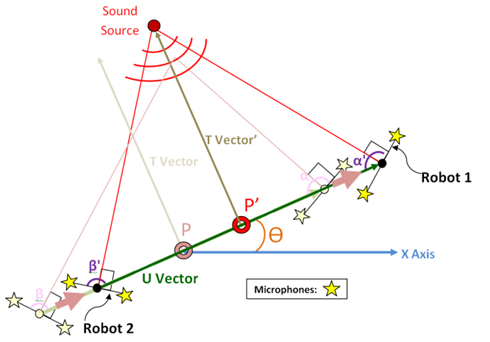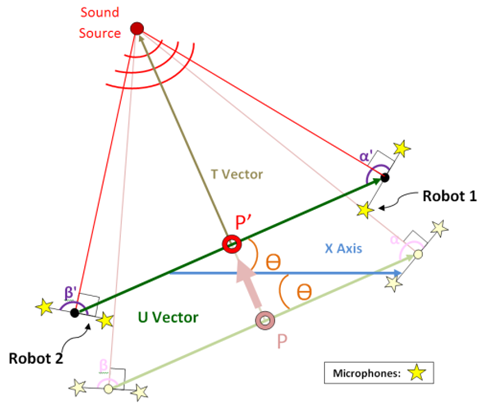Shifting & Approaching/Retreating
From ESE497 Wiki
Jump to navigationJump to search<sidebar>Robotic Sensing: Adaptive Robotic Control for Improved Acoustic Source Localization in 2D Nav</sidebar>
Overview
This type of movement involves shifting the robots sideways, forwards, and backwards in order to place the region of highest resolution of localization as close as possible to the sound source. Having the ability to approach the source, rather than just centering the robots on it is another advantage of 2D movement.
Illustrations
- The diagram shows a shift in the positive u vector direction. This will center the array about the sound source.
- The robots move along the u vector by the same amount, thus the u vector has the same magnitude and direction as before, yet the robots are in new locations. The only changed parameters were P, Alpha, and Beta.
- The diagram shows a shift of the robot array along the T Vector to approach the sound source.
- P is moved along the T vector; Alpha and Beta were changed as well. No other parameters are changed.

